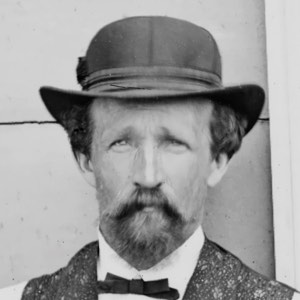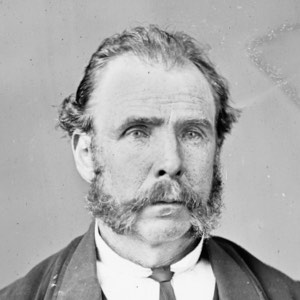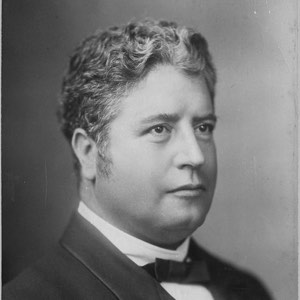Racism
Since its inception, white Australia has stolen from others - land, children, lives, autonomy, wages - aided and abetted by the law and the institutions that enforce it, such as the police. As part of the official - albeit internal - communications of an organ of government, the terms and language used in the gazette shows us some of the attitudes of the times. Given what we know about the period, it probably hardly needs pointing out that racist attitudes were held by many within the NSW police. If the gazette contains offensive descriptions and terms such as 'blackfellow' (32), 'the blacks' (49), 'Chinaman' (2,023), 'half-caste' (816), 'Kanaka' (23), and 'large Jewish nose' (6), it is reasonable to assume that these views were not out of step with many of its officers. As the Royal Commission into Aboriginal Deaths in Custody notes, in the section 'The Importance of History':
"Police officers naturally shared all the characteristics of the society from which they were recruited, including the idea of racial superiority in relation to Aboriginal people and the idea of white superiority in general; and being members of a highly disciplined centralist organisation their ideas may have been more fixed than most" 2
After all, one of the first acts of the newly formed federal government in 1901 - led by New South Welshman Edmund Barton - was to pass the Immigration Restriction Act, better known as the White Australia policy, the legal embodiment of racist attitudes stretching back generations. It was Barton himself who said:
"The doctrine of the equality of man was never intended to apply to the equality of the Englishman and the Chinaman." 1
This racism was particularly evident in the descriptions and reporting of crimes that involved Aboriginal people. A whole range of offensive terms appear, especially in regards to Aboriginal women, such as 'gin' (17) and 'lubra' (4). Plus we know - as did many at the time - that massacres of Aboriginal men, women and children had been occurring since colonisation, including over the period covered by this project (1860-1900).
To take just one example of how these attitudes of racial superiority, and the lesser value put on the lives of Aboriginal people may have manifest themselves in the gazette, compare the number of murders reported where the suspect was Aboriginal and the victim was non-Aboriginal with the number of murders reported where the victim was Aboriginal and the suspect was non-Aboriginal. Here you see quite a difference, especially when considering the population composition at the time. The murders of Aboriginal people by non-Aboriginal people were reported at around half the rate of murders of Aboriginal people by non-Aboriginal people (see 'Selective Reporting' below). Given we know that there were entire massacres of Aboriginal people not reported, this suggests that individual murders of Aboriginal people by non-Aboriginal people were perhaps under-reported as well.
In addition to this, in cases where the suspect(s) in the murder of Aboriginal people were non-Aboriginal, 25% were acquitted or discharged (2 of 8 cases), and in 38% of cases bail was allowed (3 of 8 cases). On the other hand, in the 15 cases where the suspects were Aboriginal, there were no mentions of cases being discharged, nor any mention of acquittals, and in the sole case where it was noted that bail was allowed, the individual was later re-arrested and the initial charge upgraded from manslaughter to murder on the instructions of the Attorney General.
There were also at least 3 cases where an Aboriginal suspect was shot and killed by NSW police, shown by the blue circles in the graph below (the 4th in 1900 was when Joe Governor was shot by John Wilkinson after the government offered a £2,000 reward for their capture). In one case an inquiry was held, and the policeman in question was "charged with manslaughter, though this was later overturned in a subsequent inquiry, and the constable
"discharged from custody, with credit for his courageous conduct".
There were also an additional five incidents where the victim was Aboriginal, but the suspect was unknown.
1. Australian Parliament House
2. Royal Commission into Aboriginal Deaths in Custody
Selective Reporting
Each (non-red) circle below represents a report in the gazette involving murder in NSW, where all the suspects were Aboriginal and all the victims non-Aboriginal, or vice-versa. A single dot may represent multiple suspects and/or victims. Massacre information from The Guardian Australia's The Killing Times, which uses data from Colonial Frontier Massacres in Australia, 1788-1930
- Aboriginal suspect(s), non-Aboriginal victim(s)
- non-Aboriginal suspect(s), Aboriginal victim(s)
- Aboriginal suspect(s) shot by police
- Massacre of Aboriginal people (unreported in gazette)
1860s
1870s
1880s
1890s
Murders recorded:
Aboriginal suspect(s),
non-Aboriginal victim(s)
non-Aboriginal suspect(s), Aboriginal victim(s)
NSW population at the time*:
Aboriginal people
10,743 1.4%non-Aboriginal people
748,922 98.6%* population is the average for the period 1860-1900 and shown for comparison. Aboriginal population is the estimated minimum. Historical population data via the ABS (Tables 7, 8, & 9).






